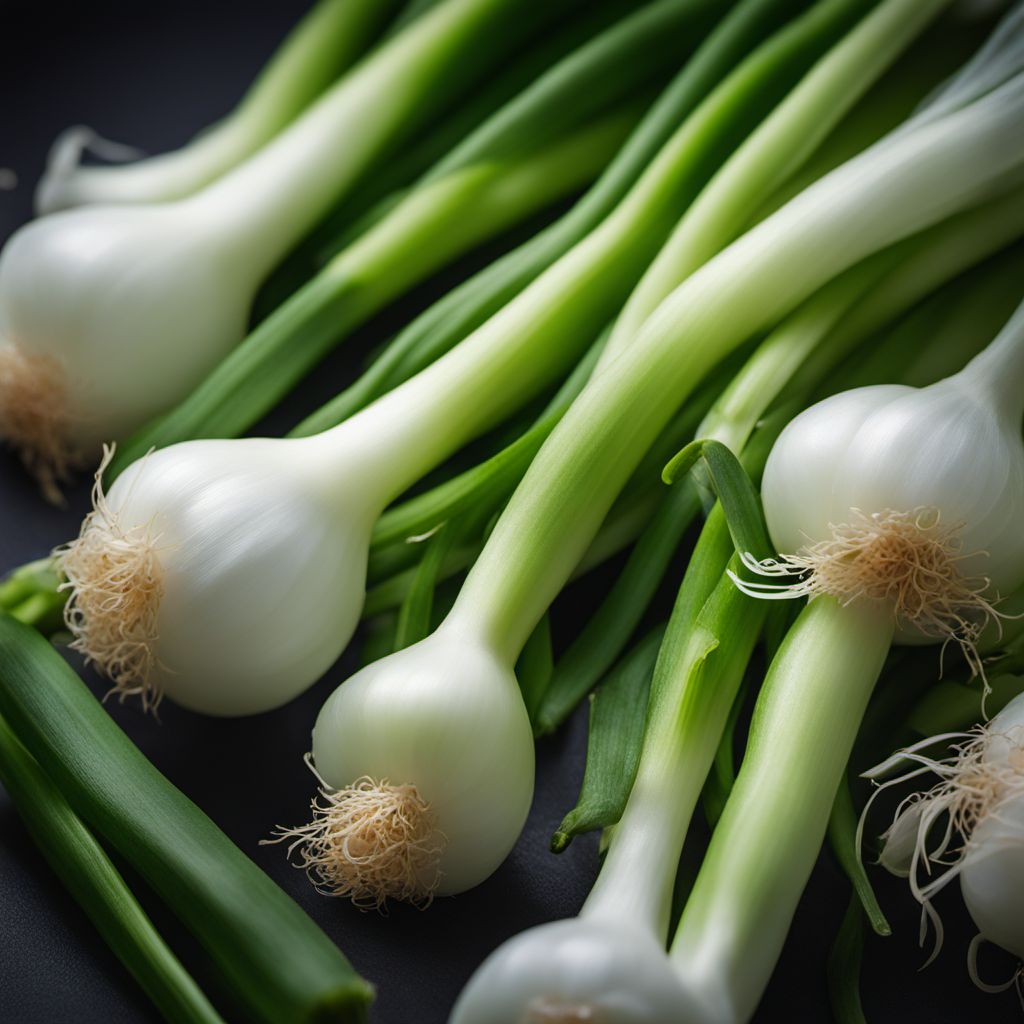
Ingredient
Spring onions and similar-
The Versatile Alliums
Spring onions are young onions that are harvested before they fully mature. They have long green stalks and small white bulbs. The flavor of spring onions is milder and less pungent compared to mature onions, making them suitable for raw or lightly cooked preparations. They can be used as a garnish, added to salads, stir-fries, soups, or used as a flavoring agent in various cuisines.
Origins and history
Spring onions have been cultivated and consumed for thousands of years in different parts of the world. They are believed to have originated in Asia and have been an integral part of Asian cuisines for centuries. Spring onions are also commonly used in Mediterranean, Middle Eastern, and Mexican cuisines, adding a fresh and aromatic touch to dishes.
Nutritional information
Spring onions are low in calories and fat, making them a healthy addition to meals. They are a good source of vitamins A and C, as well as fiber. A 1-cup serving of chopped spring onions provides approximately 32 calories, 2 grams of fiber, and 3 grams of sugar.
Allergens
Spring onions may cause allergic reactions in individuals who are sensitive to onions or other allium vegetables. Symptoms may include skin rashes, digestive issues, or respiratory problems. It is important to exercise caution and consult with a healthcare professional if you have known allergies to allium vegetables before consuming spring onions.
How to select
When selecting spring onions, look for ones with fresh, vibrant green stalks and firm white bulbs. Avoid spring onions that have wilted or yellowing leaves. The bulbs should be plump and free from blemishes or soft spots. If possible, choose organic spring onions to ensure they are free from pesticides or chemical residues.
Storage recommendations
To keep spring onions fresh, trim the roots and store them in the refrigerator. Wrap the onions in a damp paper towel or place them in a perforated plastic bag to maintain moisture. Spring onions can be stored for up to a week, but it is best to use them as soon as possible for optimal flavor and freshness.
How to produce
Spring onions can be easily grown in home gardens or containers. They require well-drained soil and full sun exposure. Plant the onion sets or bulbs in early spring or fall, spacing them about 4-6 inches apart. Regularly water the plants and harvest the green stalks as needed. Spring onions can be harvested when they reach a desired size, typically after 8-12 weeks of planting.
Preparation tips
Spring onions can be used in a variety of culinary preparations. They can be used as a garnish for soups, salads, or grilled meats. Spring onions can also be sautéed, stir-fried, or grilled to bring out their natural sweetness. They are commonly used in Asian stir-fries, Mexican salsas, or Mediterranean dishes. The green stalks can be used as a substitute for chives or scallions in recipes.
Availability
Spring onions are widely available in most grocery stores, supermarkets, and farmers markets. They are cultivated in many regions around the world and are often sold in bunches or as individual stalks. Other similar alliums, such as chives or scallions, can also be found in these markets.
